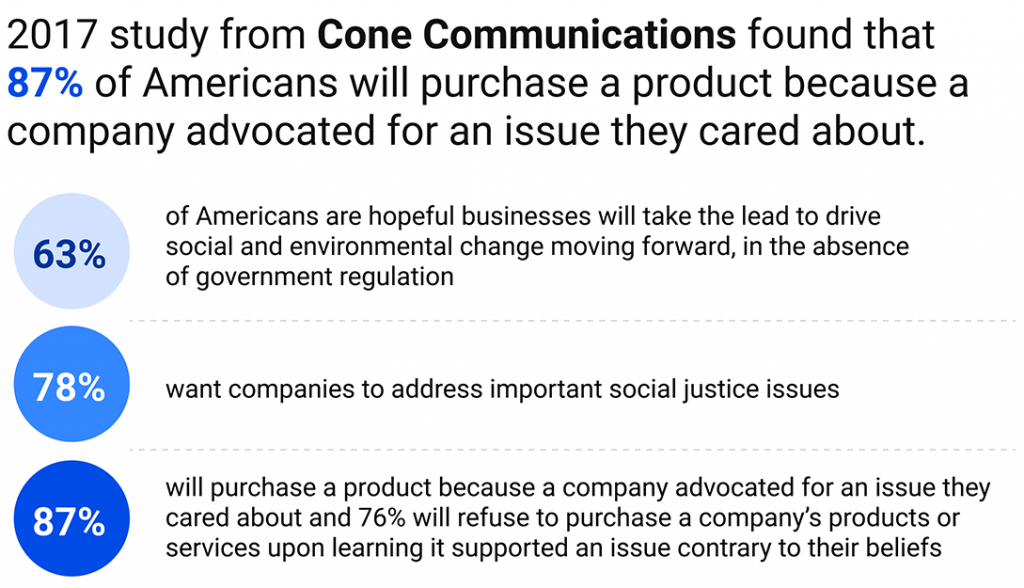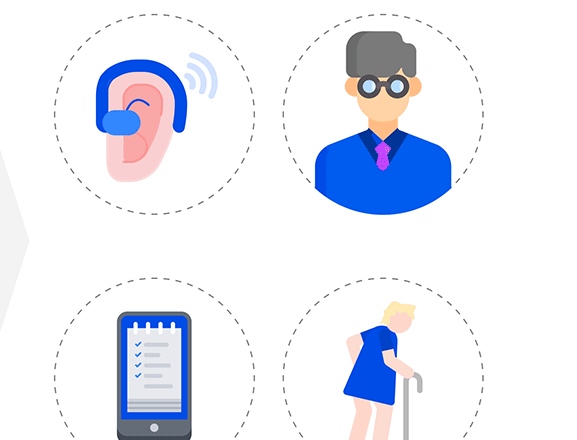How to Gain Support for ADA Compliance
The topic of accessibility is not only popping up in more and more discussions, but it’s also beginning to impact the way businesses function.
This is great news because accessibility is good for people — and not just people with disabilities. It’s also good for business.
Unique People, Universal Needs
The reality is that every person is unique. Yet while we experience things differently, our needs are universal.
We all need to be able to access basic things, like buildings and subways. But as the world becomes increasingly digitized, the need for universal web page accessibility (and other universal technologies) is also increasing.
In fact, one out of five people report requiring some type of assistive technology to access websites or apps — that’s 650 million people worldwide.
Assistive technologies are useful for people who experience hearing, vision, cognitive, and ambulatory differences, but also impact self-care practices and independent living capability. They don’t just make a difference for individuals with disabilities but in all kinds of circumstances.
Broaden Your Definition of Accessibility
It makes sense then, that we need to broaden our definition of accessibility far beyond its legacy criteria.
Let’s approach this through the lens of an inclusivity circle.
A building that is only navigable via stairs obviously prevents some people from accessing it, like a person in a wheelchair, or someone pushing an infant in a stroller. But it’s also challenging for people who are on crutches, carrying lots of bags, in poor physical condition, have vision impairment, are dragging luggage with them, or maybe even suffer from claustrophobia or agoraphobia.
It’s not an inclusive circle — some people are left outside of it — because the building isn’t universally designed. But a building that features stairs, elevators, and escalators would be inclusive to all people.
When we consider accessibility standards, we should broaden our definition to mean that everyone has access to the full value of a product or service regardless of their ability, circumstance, or context.
Website Accessibility
The legal origins of accessibility are founded on the Americans with Disabilities Act (ADA) laws passed in 1990. These acknowledged that buildings not designed to accommodate individuals with disabilities can prevent some people from entering and accessing services. The Department of Justice (DOJ) considers websites to be places requiring “public accommodations.”
Consequently, web accessibility, or the inclusive practice of removing barriers for people that might prevent their interaction with, or access to, websites or mobile applications, is part of being ADA compliant.
Accessibility is the law in the United States and many other countries around the world. WCAG 2.0 level (AA) and 508 compliance apply to owners of any digital website or application available to Americans.
However, lack of regulation equates to low compliance levels, and some organizations, like Domino’s Pizza, are actively challenging accessibility laws in the highest US courts.
The Case for Compliance
While website compliance isn’t optional — and isn’t exactly enforced — it’s still incredibly important.
Not only is complying with the ADA a moral imperative for businesses, but it’s also the smart money move.
Roughly 61 million Americans have a disability, and the global discretionary spending power of people with disabilities is estimated at $220 billion per year. Consequently, digitally inclusive businesses earn 28% higher revenue and a 30% greater profit margin on average. They’re also eligible for state and local government contracts for goods or services.
Additionally, compliant companies experience 28% better website satisfaction scores on average, and increases in earned traffic (6-10% on average) and search rank (SEO/SERP).
Their websites appeal to a wider audience. They result in better reading and comprehension scores (especially for people using a site written in their second language) and higher use of transcripts by visitors in noisy, sound-sensitive environments.
Furthermore, ethical commerce stats show people reward brands that align with their
personal interests and morals and spend more with accessible products (e.g. Apple iTunes U and Siri, or Tom’s). In fact, a 2017 study from Cone Communications found that 87% of Americans will purchase a product because a company advocated for an issue they cared about.
In addition to a positive effect on brand image, digitally inclusive companies have improved acquisition and retention with customers and employees. A Glassdoor study found that 67% of job seekers consider workplace diversity an important factor when considering employment opportunities, and more than 50% of current employees want their workplace to do more to increase diversity.
Furthermore, a Forrester Research Economic Impact Study study commissioned by Microsoft concluded that accessibility could contribute to cost savings. Technology updates and redesigns that include accessibility along with other best practices have demonstrated reduced costs for maintenance and service over time.
Conversely, a lack of compliance can become quite serious. Companies run an increased risk of litigation for accessibility, and a higher risk of discrimination lawsuits. (The number of cases is on the rise, including big names like Target, Netflix, and H&R Block). Legal repercussions can not only be costly (as in seven-figure settlements) but also consume mass amounts of your team’s time.
There is a voluntary reduction of workforce candidates (specifically veterans) and employee churn and attrition. There’s also a voluntary contraction of market size and serviceable industries, and loss of customers in general. All of this is reflected in lower CSAT and CX scores.
As Paul Smyth, Head of Digital Accessibility for Barclays stated: “Many organizations are waking up to the fact that embracing accessibility leads to multiple benefits – reducing legal risks, strengthening brand presence, improving customer experience and colleague productivity.”

So How Do You Become Compliant?
Start with a full audit. Object Edge offers a combination of machine and human evaluation techniques which produce a comprehensive list of issues and recommendations for solving the issues.
Next, agree on the standard and address each requirement section by section. Provide training for your resources or remediate issues directly with your hired compliance team — whichever is easier.
Finally, focus on achieving sustainable results. Establish a plan for fixing issues and put processes in place so you can maintain web or app accessibility compliance over time at the level you set.
Compliance is critical for a number of reasons, from legal to financial to moral. The digital era demands inclusivity and accessibility. It’s time to embrace what’s good for business and for people.
